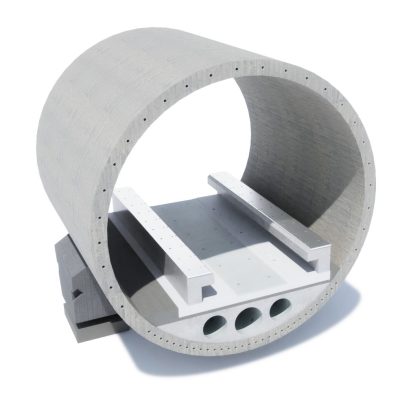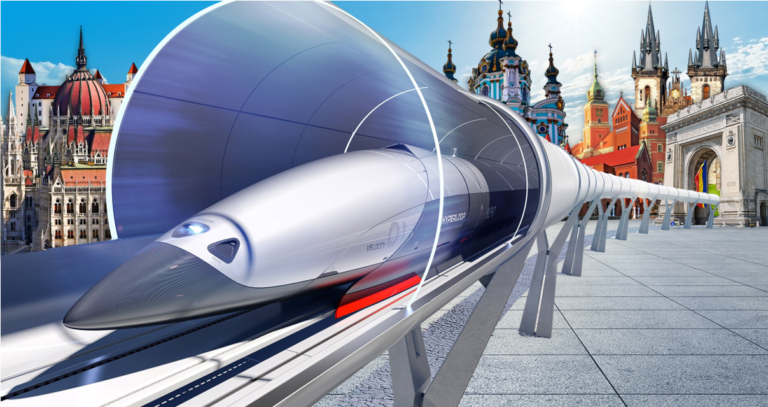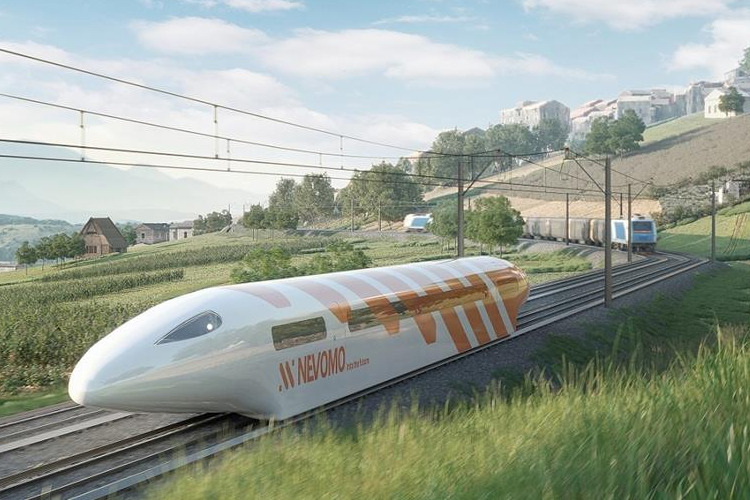A little less than a year after construction began, the Hyperloop test track in Ottobrunn near Munich is now complete. The transportation system, envisioning passenger capsules traveling at approximately 850 kilometers per hour through a near-vacuum tube, takes a crucial step forward in its research and development.
The inauguration, taking place on Wednesday afternoon, is expected to be attended by Bavarian Minister President Markus Söder, Minister of Science Markus Blume (both from the CSU), and Alexander Braun, Vice President for Digitalization and IT Systems at the Technical University of Munich (TUM).
In addition to the concrete vacuum tube, the test track includes a full-scale passenger pod. According to TUM, this marks Europe’s first fully certified test track in real size, dedicated to passenger operations.
About TUM Hyperloop
Elon Musk launched Hyperloop competitions for students worldwide about a decade ago. Throughout these competitions, teams from TUM consistently excelled and secured first place in all contests. Consequently, the research on this transportation system has been firmly established within TUM’s own Hyperloop Program. Since 2020, the program has been integrated into the Hightech Agenda Bayern and is co-financed by the Free State of Bavaria.
The concrete tube
The 24-meter-long and 4-meter-wide concrete structure is designed to maintain a vacuum within a large volume, serving as a test environment for hyperloop operations. In addition, the segment integrates the guideway, which houses all track elements required for the contactless movement of a passenger vehicle.

Reinforced concrete — One look is all you need to tell our tube apart thanks to its distinguishing high-performance concrete exterior. Compared to the widely-used steel tubes, reinforced concrete comes with a wide range of benefits. It allows for better absorption of vibrations during operation, reducing the risk of long-term structural damage while enabling quieter travel.
Looking to the future, this decision will emerge as the most cost-effective, durable, and long-lasting solution for a full-size hyperloop system spanning across borders and nations.
Segment structure — In order to build a structure of this size, the tube called for a unique approach that balances modularity with durability.
TUM team developed a design that consists of six individual segments which can be produced in individual parts and then connected on-site using 42 tensioned steel wires, to form an airtight structure. Together with the strong compressive forces from the wires, custom-produced sealing rings between the segments create a vacuum-proof seal.
Guideway element — At the heart of the vacuum tube lies the guideway element, a vital component that spans the tube’s entire length. This element houses the core systems for propulsion, guidance, and levitation.
While the propulsion track generates a travelling magnetic field to push the pod along, the guidance and levitation rails are used by the vehicle to keep the vehicle on track in mid-air. Produced to the highest precision, the element ensures a comfortable and smooth ride for passengers.
Vacuum system — the vacuum container houses high-performance pumps to generate the partial vacuum inside the tube. These pumps are connected to the tube’s end cap, evacuating air from the tube to generate an operating pressure of 10 millibars inside. As such, this demonstrator integrates and tests the vacuum technology later used for future commercial tracks.
The TUM Hyperloop system efficiently achieves a vacuum state in the tube within 70 minutes. It additionally has the capability to repressurize and restore normal atmospheric conditions in under a minute, meeting the high safety standards required for certification.
Power supply and electronics — energy supply is the critical powerhouse behind the demonstrator. It provides and distributes the required energy to the various subsystems, including vacuum pumps, levitation and propulsion systems.
Notably, almost 60 percent of the power is allocated to the propulsion system to accelerate the pod. However, during deceleration, the TUM team is able to recover a significant amount of the expended energy, making the system highly energy-efficient.



